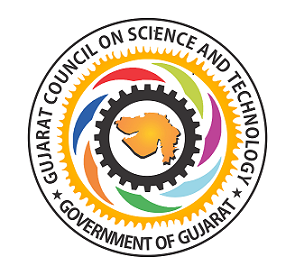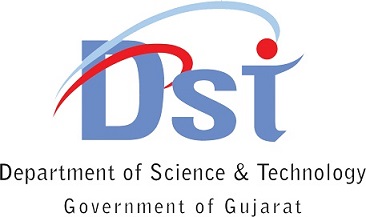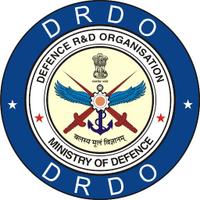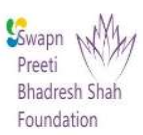ICFITT 2017 Keynotes
Dr. Ahcène Bounceur
Brest University, France

Title
Finding the boundary nodes of a WSN using the D-LPCN algorithm and its simulation under CupCarbon
Abstract
Finding the boundary and the clusters of a wireless sensor network (WSN) can be modeled as the problem of finding a polygon hull in a connected Euclidean graph, the polygon hull representing a minimal set of connected boundary nodes. This keynote presents a new algorithm called D-LPCN (Distributed Least Polar-angle Connected Node), which has two main advantages. The first one is that the algorithm works with any type of connected network, given as planar or not. Furthermore, it takes into account any blocking situation and contains the necessary elements to avoid them. The second advantage is that the algorithm can determine all the clusters of the network. The proposed algorithm is validated using the CupCarbon, Tossim and Contiki simulators. It has also been implemented using real sensor nodes based on the TelosB and Arduino/XBee platforms. The energy consumption of the network is estimated and depends on the number of the boundary nodes and their neighbors. The simulation results show that the D-LPCN algorithm is less energy consuming than the existing algorithms.
Bio
Ahcene Bounceur is an associate professor (HDR and qualified for professorship) of Computer Science and Operations Research at the University of Brest (UBO). He is a member of the Lab-STICC Laboratory. He received a Ph.D. in Micro and Nano electronics at Grenoble INP, France in 2007. He received the M.S. degrees from ENSIMAG, Grenoble, France in 2003. From April 2007 to August 2008, he was a postdoctoral fellow at TIMA Laboratory. From September 2007 to August 2008, he was with Grenoble INP, where he was a temporary professor. He has obtained the 3rd place of the Annual IEEE Test Technology Technical Council (TTTC-IEEE) Doctoral Thesis Contest, Berkeley, May 2007. His current research activities are focused on: Tools for simulation of Wireless Sensor Networks (WSN) dedicated to Smart-cities and IoT, parallel models for accelerating simulations and predicting/testing parameters in WSNs, sampling methods for data mining and Big Data. He is the coordinator of the ANR project PERSEPTEUR and a partner of the eHealth project SUIDIA.
Dr. Haitham Taha
Professor, University of Technology, Baghdad, Iraq

Title
Mathematically Wireless Communication Technologies
Abstract
Nowadays, the mobile telecommunications industry faces the problem of providing the technology that be able to support a wide variety of services ranging from voice communication with a bit rate of a few kbps to wireless multimedia, and rapidly expanding resulting in demand for systems that are reliable, have a high spectral efficiency and the need of modulation technique that can transmit high data rates at high bandwidth efficiency.
Most wireless communication technologies, mathematically was depend on the theory of Fast Fourier Transform (FFT) and the others using theory of Discrete Wavelet Transform(DWT) and doing by comparison between the two theories to be interpreted communication technology, and research has shown the benefits and disadvantages of each theory to the same technique.
We doing now to try to integrate the mathematical theories of some communications technologies in order to get a good the Signal to Noise Ratio (S/N) and a small Bit Error Rate (BER).
Bio
Dr Haitham Jabbar Taha was born in Baghdad / Iraq (1969), received the Bachelor's degree, MSc. Degree from the University of Technology Baghdad, Iraq and Ph.D. degree in Electronics and Communication Engineering from the University of Technology Baghdad, Iraq and Universiti Sains Malaysia (USM) Malaysia. He is Lecturer in the Department of Electrical and Electronic Engineering, University Of Technology. He has published many papers in international journals and conferences. His teaching and research interest include digital communication, OFDM systems, MIMO System, signal processing. He works also as reviewer and editor in an International Journal and he had been as reviewer and program committees in international conferences, and editorial board member of the International Journals. He has supervised many Undergraduates and postgraduates students to graduation. He is a Member of the IEEE, IEICE, SCIEI and SDIWC. Also He is a Senior Member of the UACEE.
Mr Mombasawala
General Manager – Applications
Electronics Measurement Group
Keysight Technologies India Pvt. Ltd.

Title
Awakening of Machines & Things Through 5G and IoT Technologies
Abstract
Wireless communication landscape has been ever changing with the advent of new technologies to meet the needs of a connected world. Last two and half decades of wireless communication was focused on connecting human beings with the network. The next wave in this domain has multiple facets viz. connecting machines and things to the network, servicing mission critical applications with commercial wireless technologies and spreading augmented reality to masses.
This lecture focuses on technological drivers enabling the next generation of wireless communication namely 5G and IoT (Internet of Things). 5G is poised to fulfill the requirements of enhanced mobile broadband (eMBB), massive machine type communication (mMTC) and ultra-reliability and low latency communication (uRLLC). These three visionary objectives demand different innovation in the technology. While enabling eMBB requires data rates of the order of ≥1Gbps which in turn is driving research and development in mmWave bands specifically 24 GHz, 28 GHz, 37 GHz, 45 GHz and even 5786 GHz. This is also pushing the communication bandwidth requirements to go as wide as 2 GHz. Enabling mMTC requires low cost devices with simplified designs and also simplified communication schemes. This need innovation in energy efficient electronics and simplified protocols. The focus is also on making software ultra-stable and light. Lastly, uRLLC objective is to ensure monitoring and control happening in real-time which is enforcing the need for ultra-low latency in the range of 1 ms which is not achievable with current wireless technologies. uRLLC aims to make automation of energy distribution in a smart grid, remote machinery, remote medical surgery and driverless cars a reality and these applications demand the new technology to be ultra-reliable.
These advancements in technology requires paradigm shift in network architecture and a significant research and development activity is focusing on centralized radio access network (C-RAN). Centralized RAN will be enabled by baseband pooling to enable on-demand provisioning of capacity and adapt to the operator and subscriber over time and space.
While 3GPP is working on next generation of technologies based on licensed spectrum, there has been noteworthy innovations in un-licensed spectrum technologies falling under the head of low power wide area network (LPWAN). Proprietary technologies like LoRA, Sigfox and Telensa have already enabled real world applications under the purview of IoT. IEEE 802.11 based technologies are also evolving to enable vehicle to vehicle communication and IoT application.
Keysight being at the forefront of developing design and test platforms for the next generation of wireless technologies, has partnered with industry leaders as well as universities across the world working on 5G and IoT. With above background, this lecture will also talk about the opportunities of research and innovation for academia.
Bio
Mombasawala Mohmedsaeed currently heads the Application Engineering Organization of the Electronics Measurement Group of Keysight Technologies in India.
Mombasawala Mohmedsaeed has 26 years of experience in various technology domains in the field of Electronics, Communication, Optical and Network Operations.
Mombasawala has strong industry level test and measurement knowledge of the Physical Layer Transport Technologies (RF and Optical), IP based protocols and Mobile Network Signaling. Mombasawala has worked in Agilent Technologies as Country Manager for Application Support with primary focus on the Aerospace, Defense, Design & Validation and Wireless market segment.
Prior to joining Agilent, Mombasawala worked as Research Engineer in CDOT on wide range of Switching and Transmission products. During his 5 years of CDOT, he worked extensively on RAX system to International Gateways, ATM switches, SDH and DWDM systems. As professor in SVNIT for 2 years, Mombasawala has taught various subjects on Electronics and Communications Engineering.
Mombasawala earned his bachelor's degree in Electronics and Communication Engineering from SVNIT- Surat. He received a Post Graduate Diploma in Business Management (Marketing) from IGNOU. Mombasawala’s hobbies include reading, listening to music and watching science fiction movies.
Dr. Lalit Kumar Singh
Scientist
NPCIL-BARC
Dept of Atomic Energy
Govt. of India

Title
Safety Analysis of Safety Critical Computer Based Systems using Mathematical Modelling
Abstract
Current life-critical system designs fully incorporate digital instrumentation and control systems. Due to safety significance of such systems, these need to be designed carefully to ensure their safety requirements. However, digital systems have some unique characteristics, such as using software, and may have different failure causes and/or modes than the analog systems; hence, their incorporation into life critical systems, safety analysis entails special challenges. The strategy to perform safety analysis using Petri net for full proof design will be discussed with a case study.
Biography
Dr. Lalit Kumar Singh received his Ph.D. degree from Indian Institute of Technology (Banaras Hindu University). He is currently a Scientist in NPCIL-BARC, Department of Atomic Energy, Government of India, since 16 years, and has distinction of working on Pressurized Heavy Water Reactors (PHWR) and Light Water Reactors (LWR). He has an illustrious career and succeeded in several critical jobs assigned to him in his illustrious career, though, each of them was challenging. His assignments over the years range from design, development, testing, IV&V, related research and site validation of the safety critical computer based systems of Indian Nuclear Power Plants. He has published several research papers in journals of high impact factor like IEEE Transactions, IEEE Computer, ACM, Elsevier, Quality & Reliability International, etc. He has been invited for chief guest, keynote speeches and talks in many international conferences, short term courses, workshops & faculty development programs from many IITs, NITs & other institutes of national importance. He is recipient of many awards like publication award, group achievement award, etc. He is a reviewer of several SCI indexed journals of high impact factor. He is a life member of Indian Nuclear Society. He is a member of editorial board of many reputed journals and guest lead editor of many special issues. He is supervising many PhD students of different IITs, NITs and is PhD thesis examiner of IITs, NITs and other reputed institutes. He is a reviewer and project collaborator of Research proposals of Board of Research in Nuclear Sciences (BRNS).His research interests are in the area of reliability, safety and security of safety critical computer based systems.










































